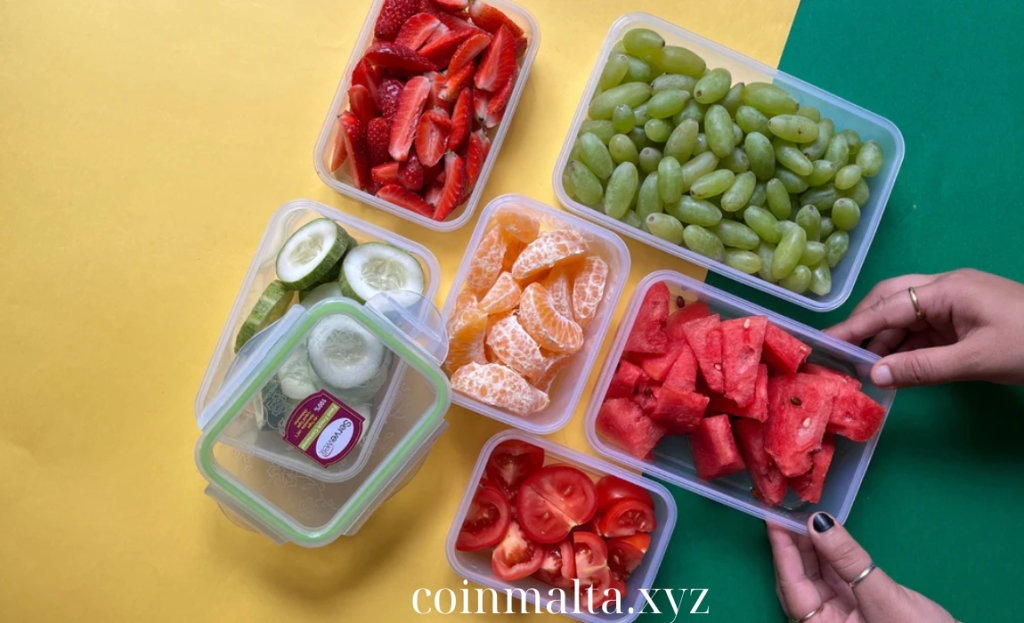Home Food Safety
Safe Food Storage at Home: Essential Tips for Keeping Your Food Fresh and Safe
Proper food storage is essential for maintaining the freshness, quality, and safety of the foods you eat. Whether it’s preserving leftovers, storing raw ingredients, or organizing your pantry, following the right safe food storage practices at home helps prevent contamination and ensures that your meals are as safe and nutritious as possible. This guide will walk you through the best strategies to store food safely at home, minimizing the risk of spoilage and foodborne illnesses.
1. Temperature Control: The Key to Preventing Spoilage
One of the most important aspects of safe food storage at home is controlling temperature. Different foods require specific storage temperatures to remain fresh and safe to eat.
- Refrigeration: Keep perishable foods such as dairy, meat, poultry, and leftovers in the refrigerator at a temperature below 40°F (4°C). Always check your refrigerator’s temperature using a thermometer to ensure it is cold enough to prevent bacterial growth.
- Freezing: Freezing is an excellent way to store foods for an extended period. Keep your freezer at 0°F (-18°C) or lower. Freeze raw meats, fish, and fruits for long-term storage, and be sure to use airtight containers or freezer bags to prevent freezer burn.
- Room temperature: Non-perishable items such as canned goods, grains, and dried foods can be stored at room temperature. However, keep these foods in a cool, dry place away from direct sunlight and heat sources to prevent spoilage.
Ideal for: Ensuring your refrigerator, freezer, and pantry are organized according to the ideal storage conditions for each type of food, maintaining freshness and reducing waste.
2. Proper Labeling: Keep Track of Freshness
To ensure safe food storage, it’s important to label and date all stored foods. This simple step helps you keep track of when foods were prepared or purchased, allowing you to use them before they spoil.
- Use-by dates: Label all leftovers with the date they were cooked and stored. Most leftovers should be eaten within 3-4 days to minimize the risk of foodborne illness.
- Freezer labeling: When freezing food, use labels to note the contents and the date it was frozen. This ensures that you can easily rotate foods, using older items first and preventing them from being forgotten in the back of the freezer.
- Organize by expiration: In both your refrigerator and pantry, organize food so that older items or those nearing expiration are at the front. This “first in, first out” system helps you use food while it is still fresh.
Ideal for: Maintaining an organized kitchen with labeled containers that help track food freshness and reduce waste.
3. Safe Storage for Raw Meats and Seafood
Storing raw meats and seafood requires extra caution to avoid cross-contamination, which can lead to serious foodborne illnesses like salmonella or E. coli. Here are essential tips for keeping these high-risk foods safe.
- Separation: Always store raw meat, poultry, and seafood separately from ready-to-eat foods like fruits, vegetables, and cooked dishes. Place raw meats on the bottom shelf of the refrigerator in sealed containers to prevent juices from dripping onto other foods.
- Use appropriate containers: Store raw meat in airtight containers or zip-top bags to keep them from leaking and contaminating other items in the fridge or freezer. If freezing, divide meat into portions and wrap tightly to prevent freezer burn.
- Storage time limits: Keep raw poultry, fish, and ground meat refrigerated for no more than 1-2 days before cooking, while beef, pork, and lamb can be stored for 3-5 days. For longer storage, freeze meats and use them within 4-12 months depending on the type.
Ideal for: Minimizing the risk of cross-contamination and ensuring that raw meats are stored safely to reduce foodborne illness.
4. Storing Fresh Produce: Keeping Fruits and Vegetables Fresh
Fresh fruits and vegetables are essential for a healthy diet, but they can spoil quickly if not stored correctly. Here are some best practices for keeping your produce fresh for longer:
- Use crisper drawers: Most refrigerators have crisper drawers that are designed to regulate humidity levels, making them ideal for storing fresh produce. Store leafy greens like spinach and lettuce in high-humidity drawers, while fruits like apples and berries should be kept in low-humidity settings.
- Separate certain fruits and vegetables: Some fruits, like apples and bananas, release ethylene gas, which can cause nearby vegetables to spoil faster. Store ethylene-producing fruits separately from vegetables to prolong freshness.
- Wash and dry before storing: It’s important to wash and dry vegetables like leafy greens and herbs before storing them in the refrigerator. However, for berries, wait to wash them until just before eating to prevent mold and spoilage.
Ideal for: Keeping fruits and vegetables fresh and preventing premature spoilage by storing them in the right conditions.
5. Dry Goods Storage: Organizing Your Pantry
Pantry staples such as flour, rice, pasta, and canned goods require safe food storage to maintain their freshness and prevent pests like ants and pantry moths.
- Airtight containers: Store dry goods like flour, grains, and cereals in airtight containers to keep them fresh and prevent contamination. This also helps to deter pests and protect the food from humidity.
- Cool and dark environment: Keep pantry items in a cool, dry, and dark place. Direct sunlight and heat can degrade food quality and shorten shelf life.
- Rotate stock: Just like with refrigerated items, use the “first in, first out” system for pantry items to ensure older products are used before newer ones.
Ideal for: Maintaining a well-organized pantry with long-lasting food items that remain safe and fresh for months.
6. Safe Storage for Dairy and Eggs
Dairy products and eggs are highly perishable, so it’s crucial to store them properly to prevent spoilage and foodborne illness.
- Dairy storage: Keep dairy products like milk, cheese, and yogurt in the coldest part of the refrigerator, usually the back or lower shelves, where temperatures are most stable. Avoid storing dairy products in the refrigerator door, as the temperature fluctuates every time the door is opened.
- Egg storage: Store eggs in their original carton to protect them from absorbing odors and to prevent moisture loss. Keep eggs in the refrigerator and avoid placing them in the door, as the temperature there is less consistent.
- Use-by dates: Always check the expiration dates on dairy products and use them before they spoil. If cheese develops mold, discard it unless it’s a type of cheese like blue cheese, where mold is natural.
Ideal for: Ensuring that highly perishable dairy products and eggs are stored correctly to maximize freshness and safety.
7. Reducing Waste: Freezing Leftovers and Bulk Cooking
To make the most of your food and minimize waste, freezing leftovers or bulk-cooked meals is a great strategy for safe food storage at home.
- Proper freezing techniques: Allow hot food to cool before freezing to avoid raising the temperature of the freezer. Store meals in portioned, airtight containers or freezer bags to prevent freezer burn.
- Label and date: Always label frozen leftovers with the date and contents to ensure they are used within a safe timeframe. Most cooked foods can be stored in the freezer for 2-3 months.
- Defrosting safely: Defrost frozen food in the refrigerator, not on the countertop, to prevent bacterial growth. If you need to thaw food quickly, use the microwave or submerge it in cold water, but cook immediately afterward.
Ideal for: Preserving meals for longer periods and reducing food waste by safely storing and reheating leftovers.
Conclusion: Safe Food Storage Practices for a Healthier Home
By following these safe food storage practices, you can ensure that the food in your home remains fresh, nutritious, and free from contamination. Whether you’re organizing your refrigerator, preserving pantry items, or storing fresh produce, proper food storage is essential for maintaining a safe and healthy kitchen environment.

